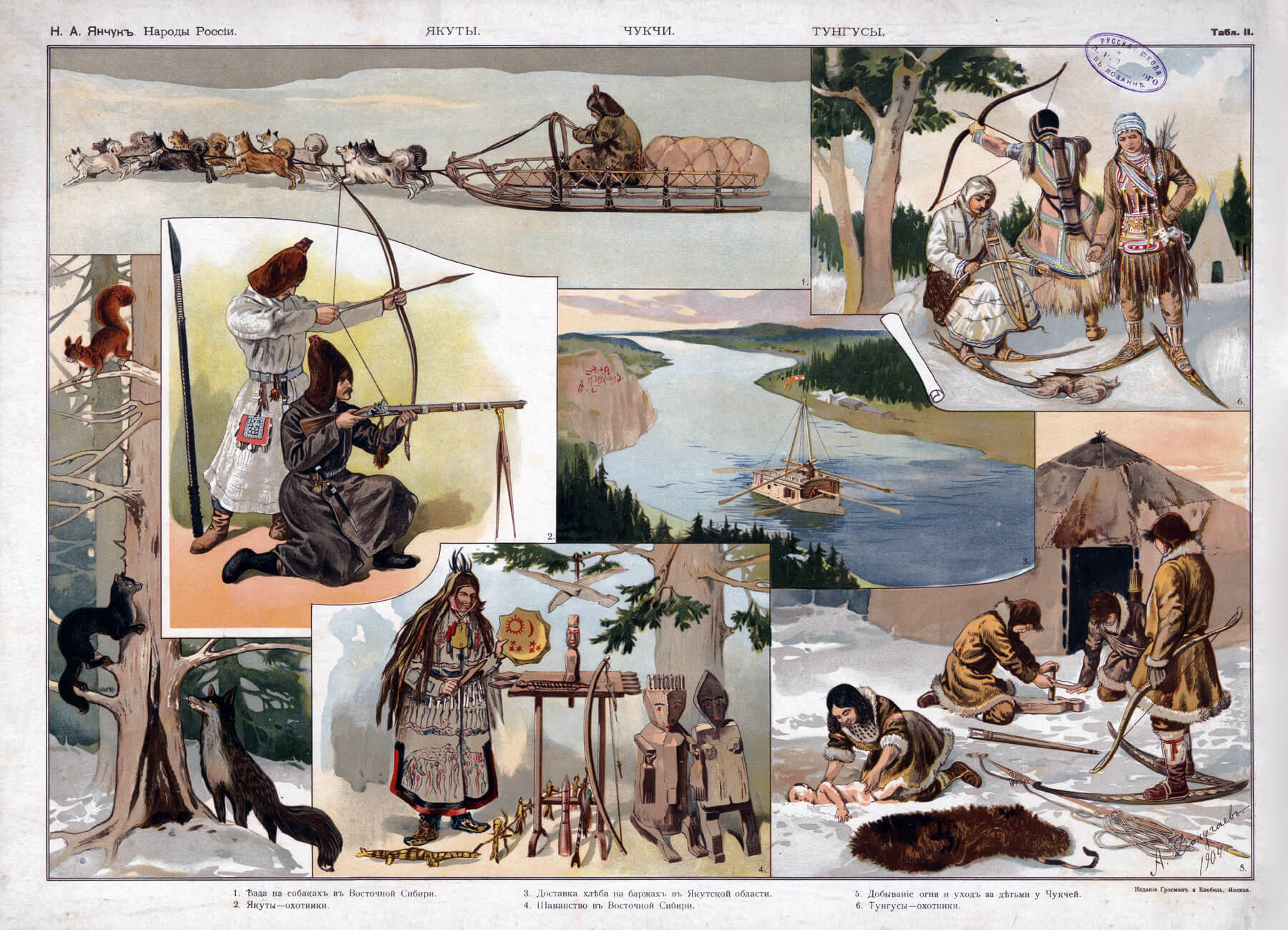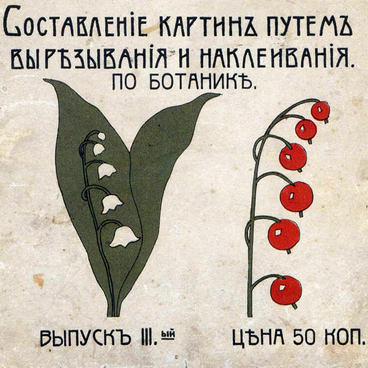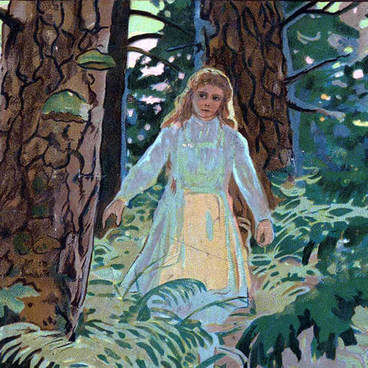The publication was issued with the direct assistance of the Moscow Public and Rumyantsev Museum, on the basis of the ethnographic collections of the Dashkov Museum and Library. It was intended for educational purposes, as, by the beginning of the 20th century, studies of homeland had become a compulsory subject in the school curriculum. The album consists of 24 large charts for hand-held and wall use, is divided into two halves: 13 charts for non-Slavic peoples of Russia and 11 charts for Slavic ones (the album includes about 40 ethnic groups).
Their types and clothing, and even small details of their home environment, were reproduced with authenticity, on the basis of original photos or drawings from nature from the museums’ collections. The lithographs were ordered abroad. Brief explanatory essays also supplemented the album. The essays’ texts were proposed to be used by teachers as an outline for creative stories. The drawings and collages were made by A. Dokuchaev.
The album was compiled by ethnographer Nikolai Andreyevich Yanchuk, who made a significant contribution to the study of the history, culture and life of Slavic peoples.The album was compiled by ethnographer Nikolai Andreyevich Yanchuk, who made a significant contribution to the study of the history, culture and life of Slavic peoples.





